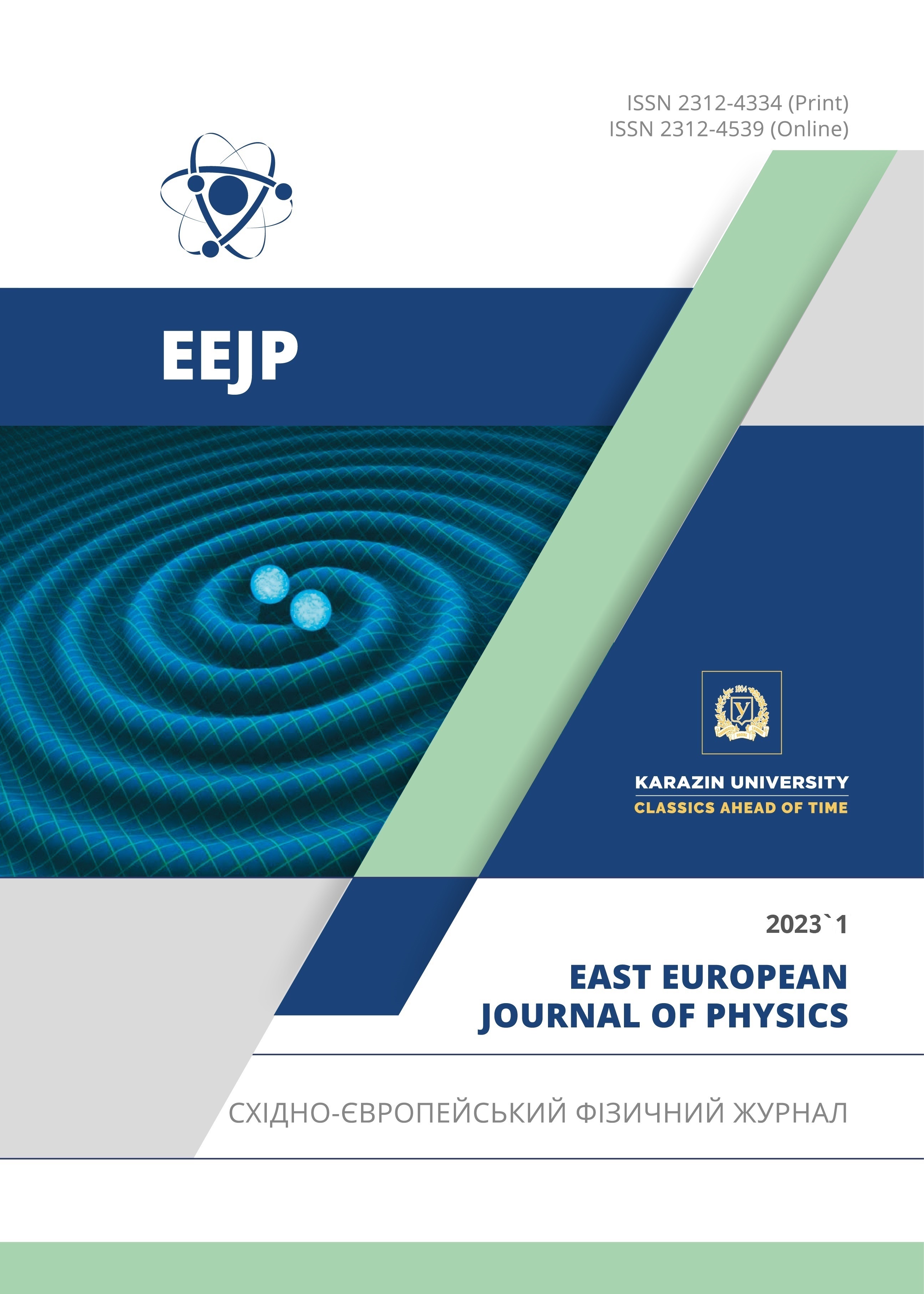Оцінка впливу індексу маси тіла та співвідношення сигнал-шум на якість PET/CT - зображень у пацієнтів Іраку на рак печінки
Анотація
Якість зображення було оцінено та передбачено за допомогою співвідношення сигнал/шум (SNR). Метою цього дослідження є дослідження зв’язків між вимірюваннями індексу маси тіла (BMI) і SNR при PET -зображенні з використанням досліджень пацієнтів із раком печінки. Три групи з 59 пацієнтів (24 чоловіки та 35 жінок) були розділені відповідно до BMI. Після внутрішньовенної ін’єкції 0,1 mCi 18F-FDG на кілограм маси тіла проводили PET -сканування випромінювання протягом (1, 1,5 і 3) хв/положення ліжка відповідно до ваги пацієнта. Оскільки печінка є органом однорідного метаболізму, п’ять областей інтересу (ROI) були зроблені в одному місці, п’ять послідовних зрізів сканування PET/CT, щоб визначити середні значення поглинання (сигналу) та його стандартне відхилення. Ми отримали співвідношення сигнал-шум печінки із співвідношення обох. Вага, зріст, SNR та індекс маси тіла були визначені за допомогою електронної таблиці, а графіки були створені, щоб показати зв’язок між цими змінними. Графіки продемонстрували, що SNR зменшується, коли BMI збільшується, і що, незважаючи на збільшення дози ін’єкції, SNR також зменшується. Це пояснюється тим, що люди з більшою вагою приймають вищі дози і, згідно з повідомленнями, мають нижчий SNR. Ці результати показують, що, незважаючи на отримання більших доз FDG, зображення важких пацієнтів, виміряні SNR, нижчої якості, ніж зображення тонших пацієнтів.
Завантаження
Посилання
N. Waeleh, M.I. Saripan, M. Musarudin, S. Mashohor, and F.F.A. Saad, “Correlation between 18F-FDG dosage and SNR on various BMI patient groups tested in NEMA IEC PET phantom”, Applied Radiation and Isotopes 176, 109885 (2021). https://doi.org/10.1016/j.apradiso.2021.109885
A.K. Yadav, and N.S. Desai, “Cancer stem cells: acquisition, characteristics, therapeutic implications, targeting strategies and future prospects”, Stem Cell Rev. Reports, 15, 331 (2019). https://doi.org/10.1007/s12015-019-09887-2
M.C. Liu, G.R. Oxnard, E.A. Klein, C. Swanton, M.V. Seiden, CCGA Consortium, “Sensitive and specific multi-cancer detection and localization using methylation signatures in cell-free DNA”, Ann. Oncol. 31, 745 (2020). https://doi.org/10.1016/j.annonc.2020.02.011
E. Hubbell, C.A. Clarke, A.M. Aravanis, and C.D. Berg, “Modeled reductions i late-stage cancer with a multi-cancer early detection test”, Canc. Epidemiol. Biomarkers Prev. 30, 460 (2020). https://doi.org/10.1158/1055-9965.EPI-20-1134
M.R. Hasan, S.M. Kadam, and S.I. Essa, “Diffuse Thyroid Uptake in FDG PET/ CT Scan cCan Predict Subclinical Thyroid Disorders”, Iraqi Journal of Science, 63(5), 2000 (2022). https://doi.org/10.24996/ijs.2022.63.5.15
S. Kalman, and T. Turkington, “Introduction to PET instrumentation (multiple letters)”, J. Nucl. Med. Technol. 30, 63 2002. PMID: 12055279
N. Shimada, H. Daisaki, T. Murano, T. Terauchi, H. Shinohara, and N. Moriyama, “Optimization of the scan time is based on the physical index in FDG-PET/CT (in Japanese with English abstract)”, Nihon Hoshasen Gijutsu Gakkai Zasshi, 67(10), 1259 (2011). https://doi.org/10.6009/jjrt.67.1259
World Health Organization, Builiding foundations for health, progress of member states: report of the WHO Global observatory for health, (World Health Organization, 2006).
E.H. de Groot, N. Post, R. Boellaard, N.R.L. Wagenaar, A.T.M. Willemsen, and J.A. van Dalen, “Optimized dose regimen for whole-body FDG-PET imaging”, EJNMMI Research, 3, 63 (2013). https://doi.org/10.1186/2191-219x-3-63
R.D. Badawi, P.K. Marsden, B.F. Cronin, J.L. Sutcliffe, and M.N. Maisey, “Optimization of noise-equivalent count rates in 3D PET”, Phys. Med. Biol. 41, 1755 (1996). https://doi.org/10.1088/0031-9155/41/9/014
Y. Masuda, C. Kondo, Y. Matsuo, M. Uetani, and K. Kusakabe, “Comparison of imaging protocols for 18F-FDG PET/CT in overweight patients: optimizing scan duration versus administered dose”, J. Nucl. Med. 50, 844 (2009). https://doi.org/10.2967/jnumed.108.060590
Y. Sugawara, K.R. Zasadny, A.W. Neuhoff, and R.L. Wahl, “Reevaluation of thestandardized uptake value for FDG: variations with body weight and methods for correction”, Radiology, 213, 521 (1999). https://doi.org/10.1148/radiology.213.2.r99nv37521
M. Danna, M. Lecchi, V. Bettinardi, M. Gilardi, C. Stearns, G. Lucignani, and F. Fazio, “Generation of the acquisition specific NEC (AS-NEC) curves to optimize the injected dose in 3D 18F-FDG whole body PET studies”, IEEE Trans. Nucl. Sci. 53, 86 (2006). https://doi.org/10.1109/TNS.2005.862966
C.C. Watson, M.E. Casey, B. Bendriem, J.P. Carney, D.W. Townsend, S. Eberl, S. Meikle, and F.P. DiFilippo, “Optimizing injected dose in clinical PET by accurately modeling the counting-rate response functions specific to individual patient scans”, J. Nucl. Med. 46, 1825 (2005). PMID: 16269596
Z.S. Mohammad, and J.M. Abda, “Positron Interactions with Some Human Body Organs Using the Monte Carlo Probability Method”, Iraqi Journal of Physics, 20(3), 50 (2022). https://doi.org/10.30723/ijp.v20i3.1026
Авторське право (c) 2023 Ая Б. Хаде, Самар І. Есса

Цю роботу ліцензовано за Міжнародня ліцензія Creative Commons Attribution 4.0.
Автори, які публікуються у цьому журналі, погоджуються з наступними умовами:
- Автори залишають за собою право на авторство своєї роботи та передають журналу право першої публікації цієї роботи на умовах ліцензії Creative Commons Attribution License, котра дозволяє іншим особам вільно розповсюджувати опубліковану роботу з обов'язковим посиланням на авторів оригінальної роботи та першу публікацію роботи у цьому журналі.
- Автори мають право укладати самостійні додаткові угоди щодо неексклюзивного розповсюдження роботи у тому вигляді, в якому вона була опублікована цим журналом (наприклад, розміщувати роботу в електронному сховищі установи або публікувати у складі монографії), за умови збереження посилання на першу публікацію роботи у цьому журналі.
- Політика журналу дозволяє і заохочує розміщення авторами в мережі Інтернет (наприклад, у сховищах установ або на особистих веб-сайтах) рукопису роботи, як до подання цього рукопису до редакції, так і під час його редакційного опрацювання, оскільки це сприяє виникненню продуктивної наукової дискусії та позитивно позначається на оперативності та динаміці цитування опублікованої роботи (див. The Effect of Open Access).








